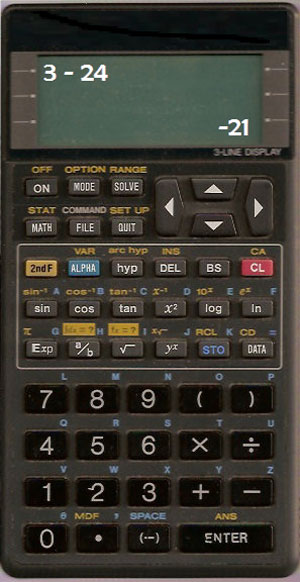
Based on the problem I just solved, does my answer make sense?
When you need to solve a word problem, you should:
In this section we will cover one of the most important steps in problem solving. Whenever you get an answer to a problem, you should think about what the answer means and whether or not it is reasonable. Ask yourself:

Based on the problem I just solved, does my answer make sense?
There are many factors to consider when determining whether or not an answer is reasonable. To examine the first of these factors, read the following problem and attempted solution to decide if the answer is reasonable.
Johnny is 24 years younger than his dad. If Johnny's dad is currently 30 years old, how old is Johnny?

Attempted Solution:
Given: Johnny's dad is 30
Question: How old is Johnny?
Plan: I should subtract 24 from Johnny's dad's age to find Johnny's age
Equation: J = 30 – 24
Calculator:

Modified from: SharpEl-5120, EpiVictor, Wikimedia Commons
Answer: J = -21
Is this answer reasonable?
Interactive popup. Assistance may be required.
No
Why or why not?
Interactive popup. Assistance may be required.
This answer says that Johnny is negative 21 years old. That's impossible.
Can you find where the mistake happened?
Interactive popup. Assistance may be required.
The student typed it incorrectly into the calculator.
The first factor to consider is whether or not the answer to the problem is physically possible:
![]()
The following are written answers from a student's test. For each statement, answer the question: Is this possible?